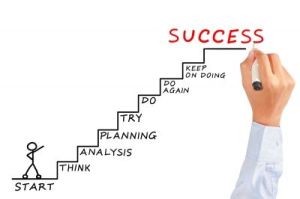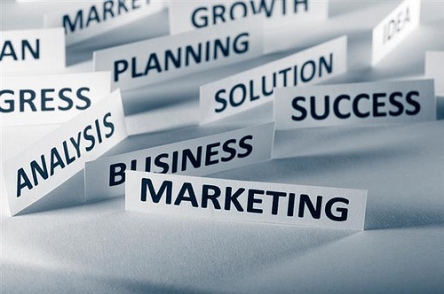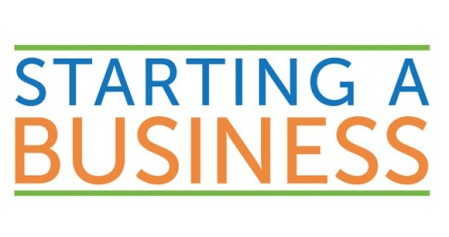 Commercial Real Estate
Commercial Real Estate
✓Sell
✓Lease
Advertise it with Inoglo.
Month: May 2015
www.inoglo.com
You have great business concepts already in place but still struggling to make it happen due to luck funds? Innovative Glow would be the best answer to your problem. Visit our recently launched website to register. Get noticed and let a great number of prospective investors find you by posting your best business concepts in our innovative platform.
Borrowing Money to Start a Business?
Is Borrowing Money really necessary to jump-start your business? Innovative Glow shares valuable information for your business needs. Click to read more
International Market Research : A Key to Successful Business
“Today’s economy is a globalized marketplace”.Understanding the global factors which could affect your business will be highly essential. These online resources will help you widen your knowledge about international market research. Click to read more
FREE join, register and post on our website.
10 Essential Startup Ingredients
Small Business Startup: 10 Essential Ingredients Every Startup Needs
 So. You think you’re ready to start a business. You chose your business name. You got your business logo designed. Your business cards are at the printer.
So. You think you’re ready to start a business. You chose your business name. You got your business logo designed. Your business cards are at the printer.
But you’re not done. You also must ensure that your business has all of the essential ingredients it needs so it has a fighting chance to succeed. Doing so will enable you to establish the proper business foundation so you can legitimize the operation and credibility of your business.
The ingredients listed below are essential for a small business startup and also play a key role in the business credit building process.
- Choose an entity structure – Pay careful consideration as to which type of structure you select. Whether you choose an LLC, S-Corporation, C-Corporation or Limited Partnership, knowing which structure is best for your income and tax situation is key for your business.
- Obtain a Business Tax Identification Number – Also known as a Federal Tax Identification Number or EIN, it’s the corporate equivalent to a social security number but used for businesses. This nine-digit number is assigned by the IRS to business entities operating in the U.S.
- Choose a business address – A virtual business address or commercial location is ideal for small businesses. It’s important to note that your physical business address and business mailing address may be two different locations.
- Set up a business phone number – Either a toll free number or local phone number is a reliable source for a company’s communications. It’s key to dedicate a phone number exclusively for business that can also be listed in major directories.
- Establish a web presence – A company web site and social media presence is just as important today as having a business phone number or email address. The easier a customer or lender can verify and learn more about your business, the better.
- Open a business bank account – A small business bank account will be your most important tool for managing your company’s finances. This will also allow you to completely separate your personal banking activities from your company’s.
- Obtain a merchant account – Accepting credit cards from customers is an essential part of doing business today. From mobile credit card readers to virtual terminals, a merchant account is what is utilized to accept credit cards, get cash and make money as a company.
- Get a business credit card – Business credit cards have many benefits such as higher limits, perks & rewards, business credit reporting and expense tracking. For real personal and business separation, a business owner needs a credit card exclusively for business purchases.
- Get a business debit card – A useful and convenient tool as opposed to writing business checks. Make sure you add overdraft protection to your small business bank account to avoid and potential overdrafts.
- Plan a business funding strategy – Many businesses fail due to lack of funding. Analyze your business credit and plan out a short-term and long-term funding strategy. Access to credit is crucial to your business as it may experience unforeseen expenses.
This small business checklist of essential elements is to help you structure your business in a successful way. The last thing you need is to wonder whether your business has everything it needs to satisfy potential customers and/or lenders. Now with this list you can evaluate your startup at a glance and be sure it has every element it needs to operate as a real business.
Article source: http://inoglo.com
Finance Your Business
Estimating Startup Costs
If you are planning to start a business, it is critical to determine your budgetary needs.
Since every business is different, and has its own specific cash needs at different stages of development, there is no universal method for estimating your startup costs. Some businesses can be started on a smaller budget, while others may require considerable investment in inventory or equipment. Additional considerations may include the cost to acquire or renovate a building or the purchase of long-term equipment.
To determine how much seed money you need to start, you must estimate the costs of doing business for the first months. Some of these expenses will be one-time costs such as the fee for incorporating your business or the price of a sign for your building. Some will be ongoing costs, such as the cost of utilities, inventory, insurance, etc.
While identifying these costs, decide whether they are essential or optional. A realistic startup budget should only include those things that are necessary to start a business.
These essential expenses can be divided into two separate categories: fixed and variable. Fixed expenses include rent, utilities, administrative costs and insurance costs. Variable expenses include inventory, shipping and packaging costs, sales commissions, and other costs associated with the direct sale of a product or service. The most effective way to calculate your startup costs is to use a worksheet that lists both one-time and ongoing costs.
Using Personal Finances
Learn How Your Personal Finances Can Affect Your Business Finances
Starting a business can be a tremendous strain on your personal finances. It takes time before your new venture turns a profit and provides financial support for you and your family. Before starting a business, it is important to get your finances in order.
To get started, write a monthly household budget that accounts for your income and your household expenses. Be as conservative as possible because maintaining your household expenses is vital to the success of your business. Any strain on your personal budget can cause a financial risk to your business.
It is also important to check your personal credit history. Because you have not established a business credit history, lenders and suppliers will use your personal credit history to determine your terms of credit.
Your credit report, which is issued by a credit bureau, determines how potential lenders and suppliers will perceive you. You should know what appears on your credit report because you may find errors to correct. You can get a copy of your personal credit report from one of the three major credit bureaus: Equifax, Experian, or TransUnion.
Preparing Financial Statements
Understanding financial statements is essential to the success of a small business. They can be used as a roadmap to steer you in the right direction and help you avoid costly breakdowns. Financial statements have a value that goes far beyond preparing tax returns or applying for loans.
Below you will find information on the primary financial statements: the balance sheet and the income statement.
Click one of the following links to jump to the topic of your choice.
The balance sheet is a snapshot of your business financials. It includes assets, and liabilities and net worth. The “bottom line” of a balance sheet must always include (assets = liabilities + net worth). The individual elements of a balance sheet change from day to day and reflect the activities of a business. Analyzing how the balance sheet changes over time will reveal important financial information about a business. It can help you can monitor your ability to collect revenues, manage your inventory, and assess your ability to satisfy creditors and stockholders.
Liabilities and net worth on the balance sheet represent sources of funds. Liabilities and net worth are composed of creditors and investors who have provided cash or its equivalent to your business. As a source of funds, they enable your business to continue or expand operations.
Assets represent the use of funds. A business uses cash or other funds provided by the creditor/investor to acquire assets. Assets include things of value that are owned or due to a business.
Liabilities represent obligations to creditors while net worth represents the owner’s investment in the business. Both creditors and owners are “investors” in the business with the only difference being the timeframe in which they expect repayment.
Anything of value that is owned or due to the business is included under the Asset section of a Balance Sheet.
Current Assets
Current assets mature in less than one year. They are the sum of:
- Cash
- Accounts Receivable (A/R)
- Inventory
- Notes Receivable (N/R)
- Other current assets
Cash: Cash pays bills and obligations. Inventory, receivables, land, building, machinery and equipment do not pay obligations even though they can be sold for cash and then used to pay bills. If cash is inadequate or improperly managed, a business may become insolvent or forced into bankruptcy. Cash includes all checking, money market and short-term savings accounts. Learn more about how to develop a cash flow analysis for your business.
Accounts Receivable (A/R): Accounts receivable are dollars due from customers. More specifically, inventory is sold and shipped, an invoice is sent to the customer, and cash is collected at later time. The receivable exists for the time period between the selling of the inventory and the receipt of cash. Receivables are proportional to sales. As sales rise, the investment you must make in receivables also increases.
Inventory: Inventory consists of the goods and materials a business purchases to resell at a profit. In the process, sales and receivables are generated. The business purchases raw material inventory that is processed (called work-in-process inventory) to be sold as finished goods inventory. For a business that sells a product, inventory is often the first use of cash. Purchasing inventory to be sold at a profit is the first step in making a profit. Selling inventory does not bring cash back into the business—it creates a receivable. Only after a time lag (equal to the receivable’s collection period) will cash return to the business. So it’s important that inventory is well managed so the business does not keep too much cash tied up in inventory, as this will reduce profits.
At the same time, a business must keep sufficient inventory on hand to prevent stockouts (having nothing to sell). Insufficient inventory will erode profits and may result in the loss of customers.
Notes Receivable (N/R): N/R is a claim due to the business as a result of the business making a loan, such as a promissory note. Notes receivable is usually a claim due from one of three sources: customers, employees or officers of the business.
- Customer notes receivable is when the customer who borrowed from the business when the customer failed to pay the invoice according to the agreed-upon payment terms. The customer’s obligation may have been converted to a promissory note.
- Employee notes receivable may be for legitimate reasons, such as a down payment on a home, but the business is neither a charity nor a bank. If the business wants to help an employee, it can co-sign on a loan advanced by a bank.
- An officer or owner borrowing from the business is the worst form of note receivable. If an officer takes money from the business, it should be declared as a dividend or withdrawal and reflected as a reduction in net worth. Treating it in any other way leads to possible manipulation of the business’s stated net worth. Banks and other lending institutions often condemn this practice.
Other Current Assets: Other current assets consist of prepaid expenses, other miscellaneous and current assets.
Fixed Assets
Fixed assets represent the use of cash to purchase physical assets whose life exceeds one year, such as:
- Land
- Building
- Machinery and equipment
- Furniture and fixtures
- Leasehold improvements
Intangibles
Intangibles are assets with an undetermined life that may never mature into cash. For most analysis purposes, intangibles are ignored as assets and are deducted from net worth because their value is difficult to determine. Intangibles consist of assets such as:
- Research and development
- Patents
- Market research
- Goodwill
- Organizational expense
Intangibles are similar to prepaid expenses- the purchase of a benefit that will be expensed at a later date. Intangibles are recouped, like fixed assets, through incremental annual charges (amortization) against income. Standard accounting procedures require most intangibles to be expensed as purchased and never capitalized (include in the balance sheet). An exception to this is purchased patents that may be amortized over the life of the patent.
Other Assets
Other assets consist of miscellaneous accounts, such as deposits and long-term notes receivable from third parties. They are turned into cash when the asset is sold or when the note is repaid.
Total Assets
Total Assets represent the sum of all the assets owned by or due to a business.
Liabilities and net worth are sources of cash listed in descending order from the most nervous creditors and soonest to mature obligations (current liabilities), to the least nervous and never due obligations (net worth).
There are two sources of funds: lender-investor and owner-investor. Lender-investor funds consist of trade suppliers, employees, tax authorities and financial institutions. Owner-investor funds consist of stockholders and principals who loan cash to the business. Both lender-investor and owner-investors have invested cash or its equivalent into the business. The only difference between the investors is the maturity date of their obligations and the degree of their nervousness.
Current Liabilities
Current liabilities are those obligations that will mature and must be paid within 12 months. These are liabilities that can create a business’s insolvency if cash is inadequate. A satisfied set of current creditors is a healthy and important source of credit for short-term uses of cash (inventory and receivables). A dissatisfied set of current creditors can threaten the survival of the business. The best way to ensure creditors will be satisfied is to keep their obligations current.
Current liabilities consist of the following obligation accounts:
- Accounts Payable (A/P)
- Accrued expenses
- Notes Payable (N/P)
- Current portion of Long-Term Debt (LTD)
Proper matching of sources and uses of funds requires that short-term (current) liabilities must be used only to purchase short-term assets (inventory and receivables).
Accounts Payable (A/P): Accounts payable are obligations due to trade suppliers who have provided inventory, goods or services used in operating the business. Suppliers generally offer terms (just like you do for your customers), since the suppliers’ competition offers payment terms. Whenever possible, you should take advantage of payment terms because this will keep your costs down. If the business is paying its suppliers in a timely fashion, days payable will not exceed the terms of payment.
Accrued Expenses: Accrued expenses are obligations owed, but not billed such as wages and payroll taxes, or obligations accruing. These expenses can also be paid over a period of time such as interest on a loan.
Accruals include wages, payroll taxes, interest payable and employee benefits accruals such as pension funds. As a labor-related category, it should vary in accordance with payroll policy. For example, if wages are paid weekly, the accrual category should seldom exceed one week’s payroll and payroll taxes.
Notes Payable (N/P): Notes payable are obligations in the form of promissory notes with short-term maturity dates of less than 12 months. Often, they are payable upon demand. Other times they have specific maturity dates (30, 60, 90, 180, 270, 360 days maturities are typical). Notes payable include only the principal amount of the debt. Any interest owed is listed under accruals.
The proceeds of notes payable should be used to finance current assets (inventory and receivables). The use of funds must be short-term so that the asset matures into cash prior to the obligation’s maturation. Proper matching would indicate borrowing for seasonal swings in sales, which cause shifts in inventory and receivables, or to repay accounts payable when attractive discount terms are offered for early payment.
Non-current Liabilities
Non-current liabilities are those obligations that will be payable in the following year. There are three types of non-current liabilities, only two of which are listed on the balance sheet:
- Non-current portion of Long-Term Debt (LTD)
- Notes Payable to Officers, Shareholders, or Owners
- Contingent Liabilities
Non-current portion of long-term debt is the principal portion of a term loan not payable in the coming year. Subordinated officer loans are treated as an item that lies between debt and equity. Contingent liabilities listed in the footnotes are potential liabilities, which hopefully never become due.
Non-current Portion of Long-Term Debt (LTD): Non-Current portion of LTD is the portion of a term loan that is not due within the next 12 months. It is listed below the current liability section to demonstrate that the loan does not have to be fully liquidated in the coming year. LTD provides cash to be used for a long-term asset purchase, either permanent working capital or fixed assets.
Notes Payable to Officers, Shareholder or Owners: Notes payable to officers, shareholders or owners represent cash that the shareholders or owners have put into the business. For tax reasons, owners may increase their equity investment beyond the initial business capitalization by making loans to the business rather than purchasing additional stock. Any return on investment to the owners can therefore be paid as tax-deductible interest expense rather than as non-tax-deductible dividends.
When a business borrows from a financial institution, it is common for the officer loans to be subordinated or put on standby. The subordination agreement prohibits the officer from collecting his or her loan prior to the repayment of the institution’s loan. When on standby, the loan will be considered as equity by the financial institution. Notes receivable officer are considered a bad sign to lenders, while notes payable officer are considered to be reassuring.
Contingent Liabilities: Contingent Liabilities are potential liabilities that are not listed on the balance sheet. They are listed in the footnotes because they may never become due and payable. Contingent liabilities include lawsuits, warranties and cross Guarantees.
If the business has been sued, but the litigation has not been initiated, there is no way of knowing whether or not the suit will result in a liability to the business. It will be listed in the footnotes because, while not a real liability, it does represent a potential liability which may impair the ability of the business to meet future obligations. Alternatively, if the business guarantees a loan made by a third party to an affiliate, the liability is contingent because it will never become due as long as the affiliate remains healthy and meets its obligations.
Total Liabilities: Total liabilities represent the sum of all monetary obligations of a business and claims creditors have on its assets.
Equity is represented by total assets minus total liabilities. Equity or Net Worth is the most patient and last to mature source of funds. It represents the owners’ share in the financing of all the assets.
The income statement, also known as the profit and loss statement, includes all income and expense accounts over a period of time. This financial statement shows how much money the business will make after all expenses are accounted for. An income statement does not reveal hidden problems, like insufficient cash flow. Income statements are read from top to bottom and represent earnings and expenses over a period of time.
Developing a Cash Flow Analysis
For small businesses, cash is king. You need it to start, operate, and expand your operations, but many small business owners often have trouble managing and maintaining cash. Inaccurate cash flow analysis – or lack of available cash – can affect the everyday operations of your business and your eligibility to receive a loan.
Cash flow is the movement of money in and out of your business. The process includes:
- Inflow which comes from operations such as the sale of goods and services, loans, lines of credit, and asset sales.
- Outflow which occurs during operations such as business expenditures, loan payments, and business purchases.
It’s crucial to balance these two figures and maintain a reasonable balance of cash at all times. An effective cash flow system will help you manage funds to cover operational costs and bills and help you foresee potential problems in the future.
Profit and loss statements and income statements can be used to determine projections for future cash flow trends of your business. These financial documents are instrumental in making cash flow projections. However, a cash flow statement serves an important and independent purpose – it accounts for non-cash items and expenses to adjust profit figures. Cash flow analysis statements display not only changes over time, but also available net cash.
Cash flow analysis statements are generally separated into three parts:
- Operating activities: This section evaluates net income and loses of a business. By assessing sales and business expenditures, all income from non-cash items is adjusted to incorporate inflows and outflows of cash transactions to determine a net figure.
- Investment activities: This section reports inflows and outflows from purchases and sales of long-term business investments such as property, assets, equipment, and securities. For example – if your bakery business purchases an additional piece of kitchen equipment, this would be considered an investment and accounted for as an outflow of cash. If your business then sold equipment that was no longer needed, this would be considered an inflow of cash..
- Financing activities: This section accounts for the cash flow trends of all money that is related to financing your business. For example: if you received a loan for your small business, the loan itself would be considered an inflow of cash. Loan payments would be considered an outflow of cash, and both would be recorded in this part of the cash flow analysis statement.
Making cash flow projections and computing cash flow statements can be confusing if you have never managed these types of finances before. Ask your business accountant or contact a business expert from your local SCORE office for help.
Breakeven Analysis
Breakeven Analysis: How to Know When You Can Expect a Profit
Breakeven analysis is used to determine when your business will be able to cover all its expenses and begin to make a profit. It is important to identify your startup costs, which will help you determine your sales revenue needed to pay ongoing business expenses.
For instance, if you have $5,000 of product sales, this will not cover $5,000 in monthly overhead expenses. The cost of selling $5,000 in retail goods could easily be $3,000 at the wholesale price, so the $5,000 in sales revenue only provides $2,000 in gross profit. The breakeven point is reached when revenue equals all business costs.
To calculate your breakeven point, you will need to identify your fixed and variable costs. Fixed costs are expenses that do not vary with sales volume, such as rent and administrative salaries. These expenses must be paid regardless of sales, and are often referred to as overhead costs. Variable costs fluctuate directly with sales volume, such as purchasing inventory, shipping, and manufacturing a product. To determine your breakeven point, use the equation below:
Breakeven point = fixed costs/ (unit selling price – variable costs)
Borrowing Money for Your Business
After you have developed a cash flow analysis and determined when your business will make profit, you may decide you need additional funding. Borrowing money is one of the most common sources of funding for a small business, but obtaining a loan isn’t always easy. Before you approach a lender for a loan, you will need to understand the factors the bank will use to evaluate your application. This page outlines some of the key factors a lender uses to analyze a potential borrower.
Click one of the following links to jump to the section of your choice:
- Types of Financing
- Ability to Repay
- Credit History
- Equity Investment
- Collateral
- Management Experience
- Questions Your Lender Will Ask
Types of Financing
There are two types of financing: equity financing and debt financing. When looking for money, you must consider your company’s debt-to-equity ratio. This ratio is the relation between dollars you have borrowed and dollars you have invested in your business. The more money owners have invested in their business, the easier it is to obtain financing.
If your firm has a high ratio of equity to debt, you should probably seek debt financing. However, if your company has a high proportion of debt to equity, experts advise that you should increase your ownership capital (equity investment) for additional funds. This will prevent you from being over-leveraged to the point of jeopardizing your company’s survival.
Equity Financing
Equity financing (or equity capital) is money raised by a company in exchange for a share of ownership in the business. Ownership accounts for owning shares of stock outright or having the right to convert other financial instruments into stock. Equity financing allows a business to obtain funds without incurring debt, or without having to repay a specific amount of money at a particular time.
Most small or growth-stage businesses use limited equity financing. Equity often comes from investors such as friends, relatives, employees, customers, or industry colleagues. The most common source of equity funding comes from venture capitalists. These are institutional risk takers and may be groups of wealthy individuals, government-assisted sources, or major financial institutions. Most specialize in one or a few closely related industries.
Debt Financing
Debt financing means borrowing money that must be repaid over a period of time, usually with interest. Debt financing can be either short-term, with full repayment due in less than one year, or long-term, with repayment due over a period greater than one year. The lender does not gain an ownership interest in the business, and debt obligations are typically limited to repaying the loan with interest. Loans are often secured by some or all of the assets of the company. In addition, lenders commonly require the borrower’s personal guarantee in case of default. This ensures that the borrower has a sufficient personal interest at stake in the business.
Loans can be obtained from many different sources, including banks, savings and loans, credit unions, commercial finance companies, and SBA-guaranteed loans. State and local governments have many programs that encourage the growth of small businesses. Family members, friends, and former associates are all potential sources, especially when capital requirements are smaller.
Traditionally, banks have been the major source of small business funding. The principal role of banks includes short-term loans, seasonal lines of credit, and single-purpose loans for machinery and equipment. Banks generally have been reluctant to offer long-term loans to small firms. SBA’s guaranteed lending programs encourage banks and non-bank lenders to make long-term loans to small firms by reducing their risk and leveraging the funds they have available.
Ability to Repay
The ability (or capacity) to repay the funds you receive from a lender must be justified in your loan package. Banks want to see two sources of repayment—cash flow from the business as well as a secondary source such as collateral. The lender reviews the past financial statements of a business to analyze its cash flow.
Generally, banks are more comfortable offering assistance to businesses that have been in existence for a number of years and have a proven financial track record. If the business has consistently made a profit and that profit can cover the payment of additional debt, it is likely that the loan will be approved. If however, the business is a start-up or has been operating marginally and has an opportunity to grow, it is necessary to prepare a thorough loan package with a detailed explanation including how the business will be able to repay the loan.
Credit History
When a small business requests a loan, one of the first things a lender looks at is personal and business credit history. So before you even start the process of preparing a loan request, you want to make sure you have good credit.
Get your personal credit report from one of the credit bureaus, such as TransUnion, Equifax orExperian. You should initiate this step well in advance of seeking a loan. Personal credit reports may contain errors or be out of date, and it can take three to four weeks for errors to be corrected. It is up to you to see that corrections are made, so make sure you check regularly on progress. You want to make sure that when a lender pulls your credit report, all the errors have been corrected and your history is up to date.
Once you obtain your credit report, check to make sure that all personal information, including your name, Social Security number and address is correct. Then carefully examine the rest of the report, which contains a list of all the credit you obtained in the past such as credit cards, mortgages, student loans and information on how you paid that credit. Any item indicating that you have had a problem in paying will be toward the top of the list. These are the credits that may affect your ability to obtain a loan.
If you have been late by a month on an occasional payment, this probably will not adversely affect your credit. But it is likely that you will have difficulty in obtaining a loan if you are continuously late in paying your credit, have a credit that was never paid, have a judgment against you, or have declared bankruptcy in the last seven years.
A person may have a period of bad credit as a result of divorce, medical crisis, or some other significant event. If you can show that your credit was good before and after this event and that you have tried to pay back those debts, you should be able to obtain a loan. It is best if you write an explanation of your credit problems and how you have rectified them, and attach this to your credit report in your loan package.
Each credit bureau has a slightly different way of presenting your credit information. Contact the bureau you used for more specific information how to read your credit report. If you need additional help in interpreting or evaluating your credit report, ask your accountant or a local banker.
Equity Investment
Don’t be misled into thinking that a start-up business can obtain all financing through conventional or special loan programs. Financial institutions want to see a certain amount of equity in a business.
Equity can be built up through retained earnings or by the injection of cash from either the owner or investors. Most banks want to see that the total liabilities or debt of a business is not more than four times the amount of equity. So if you want a loan for your business, make sure that there is enough equity in the company to leverage that loan.
Owners usually must put some of their own money into the business to get a loan. The amount of financing depends on the type of loan, purpose and terms. Most banks want the owner to put in at least 20 to 40 percent of the total request.
Having the right debt to equity ratio does not guarantee your business will get a loan. There are a number of other factors used to evaluate a business, such as net worth, which is the amount of equity in a business, which is often a combination of retained earnings and owner’s equity.
Collateral
When a financial institution gives a loan, it wants to make sure it will get its money back. That is why a lender usually requires a second source of repayment called collateral. Collateral is personal and business assets that can be sold in case the cash generated by the small business is not sufficient to repay the loan. Every loan program requires at least some collateral. If a potential borrower has no collateral, he/she will need a co-signer who has collateral to pledge. Otherwise it may be difficult to obtain a loan.
The value of collateral is not based on market value; rather, it is discounted to take into account the value that would be lost if the assets had to be liquidated. This table gives a general approximation of how different forms of collateral are valued by a typical lender and the SBA:
| COLLATERAL TYPE | LENDER | SBA |
| House | Market Value x 0.75 – Mortgage balance |
Market Value x 0.80 – Mortgage balance |
| Car | Not applicable | Not applicable |
| Truck & Heavy Equipment | Depreciated Value x 0.50 | Same |
| Office Equipment | Not applicable | Not applicable |
| Furniture & Fixtures | Depreciated Value x 0.50 | Same |
| Inventory: Perishables |
Not applicable | Not applicable |
| Jewelry | Not applicable | Not applicable |
| Other | 10%-50% | 10%-50% |
| Receivables | Under 90 days x 0.75 | Under 90 days x 0.50 |
| Stocks & Bonds | 50%-90% | 50%-90% |
| Mutual Funds | Not applicable | Not applicable |
| Individual Retirement Account (IRA) | Not applicable | Not applicable |
| Certificate of Deposit (CD) | 100% | 100% |
Collateral Coverage Ratio
The bank will calculate your collateral coverage ratio as part of the loan evaluation process. This ratio is calculated by dividing the total discounted collateral value by the total loan request.
Management Experience
Managerial expertise is a critical element in the success of any business. In fact, poor management is most frequently cited as the reason businesses fail. Lenders will be looking closely at your education and experience as well as that of your key managers.
To strengthen your management skills, SBA offers a wide range of free, online training courses. You can also get management advice from counselors at your local SCORE office.
Questions Your Lender Will Ask
- Before you apply for a loan, you need to think about a variety of questions:
- Can the business repay the loan? (Is cash flow greater than debt service?)
- Can you repay the loan if the business fails? (Is collateral sufficient to repay the loan?)
- Does the business collect its bills?
- Does the business pay its bills?
- Does the business control its inventory?
- Does the business control expenses?
- Are the officers committed to the business?
- Does the business have a profitable operating history?
- Does the business match its sources and uses of funds?
- Are sales growing?
- Are profits increasing as a percentage of sales?
- Is there any discretionary cash flow?
- What is the future of the industry?
- Who is your competition and what are their strengths and weaknesses?bb
SBA Financial Assistance Eligibility
The types of businesses that are eligible for financial assistance from the SBA, must:
- Operate for profit
- Be engaged in, or propose to do business in, the United States or its possessions
- Have reasonable owner equity to invest
- Use alternative financial resources, including personal assets, before seeking financial assistance
Special Considerations
Special considerations apply to some types of businesses and individuals, which include:
- Franchises are eligible except when a franchiser retains power to control operations to such an extent as to equate to an employment contract. The franchisee must have the right to profit from efforts commensurate with ownership.
- Recreational facilities and clubs are eligible provided: the facilities are open to the general public, or in membership-only situations, membership is not selectively denied or restricted to any particular groups
- Farms and agricultural businesses are eligible. However, these applicants should first explore Farm Service Agency (FSA) programs, particularly if the applicant has a prior or existing relationship with FSA.
- Fishing vessels are eligible. However, those seeking funds for the construction or reconditioning of vessels with a cargo capacity of five tons or more must first request financing from the National Marine Fisheries Service.
- Medical facilities including hospitals, clinics, emergency outpatient facilities, and medical and dental laboratories are eligible. Convalescent and nursing homes are also eligible, provided they are licensed by the appropriate government agency and they provide more than room and board.
- An Eligible Passive Company (EPC) is a small entity that does not engage in regular and continuous business activity. An EPC must use loan proceeds to acquire or lease, and/or improve or renovate real or personal property that it leases to one or more operating companies for use in the operating company’s business. .
- Change of ownership . Loans for this purpose are eligible provided the business benefits from the change. In most cases, this benefit should be seen in promoting the development of the business or, perhaps, in preserving its existence.
- Legal aliens are eligible; however, consideration is given to status (e.g., resident, lawful temporary resident) in determining the businesses’ degree of risk.
- Probation or parole . Applications will not be accepted from firms in which a principal is currently incarcerated, on parole, on probation or is a defendant in a criminal proceeding. Judgments are made on a case-by-case evaluation of the nature, frequency, timing of the offenses, and disposition of the offenses. Fingerprint cards are required only when a felony offense is disclosed.
Ineligible Businesses
Ineligible businesses include those engaged in illegal activities, loan packaging, speculation, multi-sales distribution, gambling, investment or lending, or where the owner is on parole. Specific types of businesses not eligible include:
- Real estate investment firms when the loan is used for investment purposes.
- Firms involved in speculative activities that develop profits from fluctuations in price rather than through the normal course of trade, such as wildcatting for oil and dealing in commodities futures, when not part of the regular activities of the business.
- Dealers of rare coins and stamps .
- Firms involved in lending activities, such as banks, finance companies, factors, leasing companies, insurance companies, and any other firm whose stock in trade is money.
- Pyramid sales plans , where a participant’s primary incentive is based on the sales made by an ever-increasing number of participants.
- Firms involved in illegal activities.
- Gambling activities , including any business whose principal activity is gambling. The rule does not restrict loans to businesses that obtain less than one-third of their annual gross income from either the sale of official state lottery tickets under a state license, or legal gambling activities licensed and supervised by a state authority.
- Charitable, religious, or other nonprofit or eleemosynary institutions, government-owned corporations, consumer and marketing cooperatives, and churches and organizations promoting religious objectives .
Is Your Business Fiscally Fit?
Financial Literacy and Education Commission
The Financial Literacy and Education Commission was established under Title V of the Fair and Accurate Credit Transactions (FACT) Act of 2003 to improve the financial literacy and education of persons in the United States. The U.S. Small Business Administration (SBA) wishes to bring financial literacy not only to America as a whole, but specifically to small businesses and future entrepreneurs. The commission was asked to develop a national financial education website (www.MyMoney.gov), along with a hotline (1-888-My Money) and a national strategy on financial education. It is chaired by the Secretary of the Treasury and comprises the heads of 21 federal entities, including SBA.
Money Smart for Small Business
If you want to start a business or learn how to better manage your business money, begin with Money Smart. SBA and FDIC jointly provide an instructor-led business training curriculum, Money Smart for Small Business, for free. This curriculum is designed to provide introductory-style training for new and aspiring entrepreneurs. The 10 modules provide the most essential information on running a small business from a financial standpoint. In addition to grounding participants in the basics, the curriculum serves as a foundation for more advanced training and technical assistance.
The 10 Training Modules: Money Smart for Small Business
Money Smart is focused on the 10 modules listed below depending on the interests and knowledge level of the targeted audience. Each module consist of an instructor guide, participant guide, and PowerPoint slides, and it can take approximately one hour to teach each module. If you interested in the Money Smart curriculum, please download the files below or place an order for a free CD of the files here.
The 10 modules include:
- Banking Services
After completing this module, you will be able to:
- Identify the most common banking services for a small business, including business checking, payroll processing, business loan and others
- Evaluate your business and what banks have to offer to you
- Identify which banking services are the best for your business
Download the Banking Services Instructor Guide, Banking Services Participant Guide, and Banking Services Classroom Presentation to get started!
- Organizational Types
After completing this module, you will be able to:
- Explain general characteristics, pros, and cons of these five common organizational types: Sole proprietor, Partnerships, Limited liability company(LLC), C-corporation and S-corporation
- Understanding what is the consideration when you decide your organization types
- Identify which organization types can benefit your business
Download the Organizational Types Instructor Guide, Organizational Types Participant Guide, andOrganizational Types Classroom Presentation to get started!
- Time Management
After completing this module, you will be able to:
- Understand why time management is important to small business
- Apply some general time management practices, including: Pareto Analysis, ABC Method, Eisenhower method and POSEC method.
Download the Time Management Instructor Guide, Time Management Participant Guide, and Time Management Classroom Presentation to get started!
- Financial Management
After completing this module, you will be able to:
- Understand the concept of financial management and its importance
- Explain financial management practices, rules, and tools commonly available to small business
- Identify financing basics for small business, such as: start up financing, financing fixed asset, working capital
Download the Financial Management Instructor Guide, Financial Management Participant Guide, andFinancial Management Classroom Presentation to get started!
- Record Keeping
After completing this module, you will be able to:
- Explain record keeping basics- practices, rules, and tools
- Understand how and which records can benefit your business
- Identify software products relevant to business record keeping
Download the Record Keeping Instructor Guide, Record Keeping Participant Guide, and Record Keeping Classroom Presentation to get started!
- Credit Reporting
After completing this module, you will be able to:
- Understand the purpose for credit reporting and its benefits, risks, and responsibilities
- Explain how these credit reports works and Identify differences between business and consumer credit reports
- Understand how to improve your business’ credit.
Download the Credit Reporting Instructor Guide, Credit Reporting Participant Guide, and Credit Reporting Classroom Presentation to get started!
- Risk Management
After completing this module, you will be able to:
- Identify the common risks relevant to a small business.
- Identify the common warning signs of risk for a small business.
- Implement, monitor, and evaluate a risk management plan for their business
Download the Risk Management Instructor Guide, Risk Management Participant Guide, and Risk Management Classroom Presentation to get started!
- Insurance
After completing this module, you will be able to:
- Understand why insurance is needed for a small business
- Identify other types of insurance that a small business should consider
- Explain how to choose the insurance products that are best for your business.
Download the Insurance Instructor Guide, Insurance Participant Guide, and Insurance Classroom Presentation to get started!
- Tax Planning and Reporting
After completing this module, you will be able to:
- Understand the federal, state, and local tax reporting requirements of a small business
- Explain how to manage your tax obligations and establish proper accounts
- Understand how the forms and processes are used to pay business taxes
Download the Tax Planning and Reporting Instructor Guide, Tax Planning and Reporting Participant Guide, and Tax Planning and Reporting Classroom Presentation to get started!
- Selling a Small Business and Succession Planning
After completing this module, you will be able to:
- Explain how to sell and close a business
- Understand benefits of creating a retirement plan
Download the Selling a Small Business Instructor Guide, Selling a Small Business Participant Guide, andSelling a Small Business Classroom Presentation to get started!
How To Start a Business
10 Steps to Starting a Business
Starting a business involves planning, making key financial decisions and completing a series of legal activities. These 10 easy steps can help you plan, prepare and manage your business. Click on the links to learn more.
Step 1: Write a Business Plan
Use these tools and resources to create a business plan. This written guide will help you map out how you will start and run your business successfully.
Step 2: Get Business Assistance and Training
Take advantage of free training and counseling services, from preparing a business plan and securing financing, to expanding or relocating a business.
Step 3: Choose a Business Location
Get advice on how to select a customer-friendly location and comply with zoning laws.
Step 4: Finance Your Business
Find government backed loans, venture capital and research grants to help you get started.
Step 5: Determine the Legal Structure of Your Business
Decide which form of ownership is best for you: sole proprietorship, partnership, Limited Liability Company (LLC), corporation, S corporation, nonprofit or cooperative.
Step 6: Register a Business Name (“Doing Business As”)
Register your business name with your state government.
Step 7: Get a Tax Identification Number
Learn which tax identification number you’ll need to obtain from the IRS and your state revenue agency.
Step 8: Register for State and Local Taxes
Register with your state to obtain a tax identification number, workers’ compensation, unemployment and disability insurance.
Step 9: Obtain Business Licenses and Permits
Get a list of federal, state and local licenses and permits required for your business.
Step 10: Understand Employer Responsibilities
Learn the legal steps you need to take to hire employees.
Startup Resources
There are a number of available programs to assist startups, micro businesses, and underserved or disadvantaged groups. The following resources provide information to help specialized audiences start their own businesses.
Environmentally-Friendly “Green” Business
Home-Based Business
Online Business
Self Employment
Minority Owned Business
Veteran Owned Business
Woman Owned Business
You can save money when starting or expanding your business by using government surplus. From commercial real estate and cars, to furniture, computers and office equipment, find what you need for your business in one place.
Visit our Facebook Page
Obtaining Financial Support
Have you been dreaming of putting up a business but having a hard time generating funds to finance your business ideas?
Do you acquire creative marketing concepts, yet still struggling to find financial support?
If your answer to either of the questions is “Yes”, then this article might be able to help with your business concerns.
Obtaining financial support to start-up a company can be acquired in various ways. Obviously, Bank Financing or short-term loans from Cooperative, or Micro Lending Enterprises comes first in the lists. The other alternatives are SBA Loan, and Merchant Cash Advance Program. Yet these financial institutions usually required the debtor to provide necessary documents to back up the company’s ability to pay debt, while some may screen the debtor for some pre-qualification processes. “Small Business Administration” and “Merchant Cash Advance Programs” for instance only extend loan assistance to micro enterprises. While Micro Lending Enterprises offers only a relatively small amount loans ranges from $500 to $35000.
Good news to all, Crowdfunding comes to the rescue, which also offer an alternate and viable approaches to generate funding for business projects may it be big or small. Although Crowdfunding has becomes very popular over the internet today. Still a large number of people even to some avid internet users were not aware that such amazing fundraising Platform exists. To explain further, Crowdfunding according to Wikipedia “is the practice of funding a project or venture by raising monetary contributions from a large number of people, typically via the internet”.
Thus,Crowdfunding is not only limited to business activities.Anyone can benefit from its platform such as family reunions, school projects or tuition fees, as well as fundraising for charitable purposes. These however, generally come for a fee either in the part of the benefactor or the one raising for funds. Nevertheless, registration to access the platform is usually free. The fees that I have mentioned only apply during the fund transfer as service fee by using the Crowdfunding websites’ platform.
One thing that’s great about Crowdfunding is, there are group of people from different parts of the worldmostly retired wealthy businessmen, who might be willing to invest money but not for the purpose of monetizing or for profit. These“group of people”are referred by many as “Angel Investor”. And for the record, there are more than 200,000 angel investors in the U.S. alone, according to survey conducted by the Center for Venture Research way back year 2007. This is why Crowdfunding sites came to life.
Finally, you too will be able to find an investor to finance your business. You simply need to be creative and innovative. Explore all choices that you have in mind and start getting noticed by potential investors who will help you bring your brilliant ideas to life.



 InoGlo/Also visit our Facebook page https://www.facebook.com/inoglogroup
InoGlo/Also visit our Facebook page https://www.facebook.com/inoglogroup